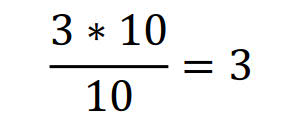Asia-Pacific Forum on Science Learning and Teaching, Volume 19, Issue 2, Article 12 (Dec., 2018) |
Within the framework of the study, sampling was based on the objective of assessing the classroom practices and activities of teachers with different learning styles. That is to say, first of all a total of 15 physics teachers assigned to high schools in the provincial center of Sivas were subjected to Kolb's learning styles inventory.
The validity and reliability of the Learning Styles Inventory was carried out by Aşkar and Akkoyunlu (1993). Cronbach's alpha reliability values are respectively calculated as follows: 0.82 for the concrete experience, 0.73 for the reflective observation, 0.83 for the abstract conceptualization, 0.78 for the active concept, 0.88 for the active concept, 0.88 for the abstract-concrete, and 0.81 for the active-reflector.
In Kolb's Learning Styles Inventory each item consists of 4 sub-options which are evaluated from 1 and 4 points. When answering the inventory, the participant marks as 4 the most appropriate option and the options values decrease gradually (as 3, 2, 1 respectively). In order to calculate a final score, first of all a point is calculated for each learning abilities (concrete experience, abstract conceptualization, active experience, reflective observation) and then a general total is fixed by adding these points. Calculated scores are checked and finalized by a specialist.
In this study, from the 15 teachers, four physics teachers working in Anatolian high schools and having different learning styles were selected as the sample of this study. In order to minimize the impact of different topics and grades on the research problem under consideration, the teachers who took part in the study were all 9th grade teachers.
Data Gathering Tools and Data Analysis
Class Observation Form
Data of this study were collected using an observation form which has been established based on the instructional activities proposed by Svinicki and Dixon (1987) (Figure 2 cited below). These activities expressed as teaching actions before being transferred to a scale.
Figure 2. Instructional activities that may support different aspects of the learning cycle (Svinicki and Dixon, 1987, p. 142).
In the observation form, the Instructional activities given in Figure 2 are defined as teaching activities and items related to four learning skills are settled. For example the teaching activities supporting the active experimentation learning skills are written as follows:
- Using simulations
- Using case study
- Laboratory activities are included
- Resort to field study work
- Project work is carried out
The observation form, consisting of 26 items, has been converted as a 5-item Likert scale employing "Always", "Most of the time", "From time-to-time", "Rarely", and "Never" options, with a view to assessing the frequency of the activities investigated using the form.
The validation of the form was achieved through consultations with 6 experts who held PhD or subsequent degrees. Through consultation, inappropriate items were revised, two items about similar activities were merged into one, and a final class observation form of 25 items was developed with respect to learning skills. These revisions were followed by a request for further approval from the experts which was given.
Data analysis
In consideration of the research questions, collected data were analyzed in two stages:
- Determining teaching practice frequency : During observations, the classroom activities of each teacher were examined according to the items of the observation form and scored according to the scale ('0' for 'Never', 1 for 'Rarely', 2 for 'From time-to-time', 3 for 'Most of the time', and 4 for 'Always'). During this phase of the analysis, it was determined how often the participant teachers performed the teaching practice during the course observations.
- Determining the average score of the teaching practice : The frequency of use of each teaching practice described in the observation form was subsequently identified, to arrive at the frequency scores for individual teaching practices, divided by the number of observations, producing the average frequency of use. A comparable scoring procedure was applied in the PhD dissertations of Özsevgeç (2007), Saka (2006) and Tekbıyık (2010). Those studies considered the use of any teaching activity as being "sufficient" if the activity in question had an average score of 3 or more. In the present study, on the other hand, the application of any teaching activity at a level of 3, which would mean that such activities were employed by the teacher "most of the time", leading to a state of affairs where other teaching activities would not be employed at a sufficient level. This is why the present study, with reference to Kolb's (1981, 1984) works, assumes that a course should employ teaching activities for all learning styles in a specific cycle, and considered the use of any teaching activity "acceptable", if it received an average frequency score of 2 or more.
The scoring scheme can be described better with an example: If a teacher used any teaching practice (for example: simulations) in all courses "most of the time" the frequency of this practice is established on the basis of the average score (AP- Average of Practice).
For this teacher, the AP for the simulations is calculated as follows:
The AP values thus calculated were used for interpretation with reference to the following categories identified through an adaptation of the categories employed in the project executed by Saglam-Arslan et al. (2017):
0 ≤ AP < 1 : Not developed at all
1 ≤ AP < 2 : Underdeveloped
2 ≤ AP < 3 : Acceptable
3 ≤ AP : ExcessiveObservation Processes
During observations, one of the researcher has observed the behaviors of the teachers in the natural environment without any intervention to the lessons (for a total of five weeks- 10 lesson hours).Before the observations, the researcher was in the class for two weeks so that both students and teachers could get used to the situation.



